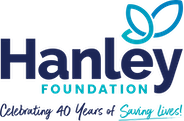By Hanley Foundation Prevention Specialist Tracy Perkins
What were the signs the student was using? Should I have paid closer attention? Was there something I should have noticed? Should I have known? How could I not have known? Was there something I could have done? How was I supposed to know that was a sign of drug use?
These, and many more questions, are often asked by teachers and school staff upon discovering that a student is using drugs or illegal substances. Too often, there are signs present, but not always evident. When learning what to look for, it is essential to note that every child is wired differently, so not all signs are present in every child who is abusing drugs.
Signs that could potentially indicate that a student is using drugs or illegal substances include, but are not limited to, the following:
Overt/Blatant Signs
- Sudden decline in grades: If academics plunge for no apparent other reason, a student may be using and completely disregarding their schoolwork.
- Increase in tardy incidences and absences or truancies: Missing school without a valid parent or guardian excuse often indicates the student is making poor decisions, which may include drug use.
- Frequent or lengthy bathroom visits: If students are leaving class repeatedly and for long periods, it is possible they are doing something they shouldn’t be doing. Staff should observe the student’s actions upon returning to the classroom and report any suspicious behavior to the administration.
- Extreme mood and energy swings: These intense changes in behavior can be positive (extremely happy, laughing, giggling or enthusiastic or energetic) or negative (lethargic, angry, or easily irritated). These actions often occur with little provocation or notice. If a student’s behavior is usually happy and outgoing and is suddenly reserved or irritable, it may be a sign of drug use. Transversely, if a student is generally quiet and sullen, and suddenly appears to be overly energetic and outgoing or social, school staff should take note and have cause for concern.
- Physical actions: Notice the actions of a student and if they are stumbling, losing their balance, or slurring their speech. Also, dilated pupils (wide, large, black dots in the center of the eye) can often indicate drug use.
- Aroma or odor on clothes or in hair: Many substances have a distinct smell, and it will permeate clothing. When questioned, a student may say the scent is not them or that it is from someone else they were around, but a strong odor usually means the person was in direct contact with the substance.
Less Obvious Signs
- Acts of secrecy: If a student is acting particularly sneaky or seems to be hiding what may seem like basic information or something that shouldn’t necessarily be a big deal, this could be an area for great concern. There could also be more important items they are trying to keep secret.
- Severe attachment to purse or backpack: If a student insists on having a purse or backpack close to (or on) themselves at all times, it should be somewhat concerning. If the student has an angry or irrational reaction if it is taken away for any reason, that is quite concerning.
- Extra peer-oriented or anti-adult behavior: Pay attention if a student behaves in a way like they’re trying to preserve their using world and keep everything out of adult awareness or concern.
- Obsessiveness: If a student lacks focus on academics and instead excessively talks about or “doodles” various substances or anything relating to substances, it may indicate a fascination with their drug use.
The items listed above are not an inclusive list, but they are a good place to start in terms of staying alert and possibly identifying substance abuse in students. School staff spends a lot of time with students, and thus, they have the advantage of knowing what looks “normal” for each student. The best gauge to determine possible drug use is to use professional judgment. What will usually be a determining factor of concern is to identify any significant changes in behavior which are extremely out of character for the student in question.
In conclusion, it is also important to note that sometimes young people are hormonal, overly emotional, and often have changes in their behavior completely unrelated to drug use. The best bet is to err on the side of concern for the student and identify or report anything that makes a school staff member feel uneasy. If there is no drug use, that is a good thing, and hopefully, the student and their parent or guardian will appreciate that the staff member cared enough to make sure everything is okay.


